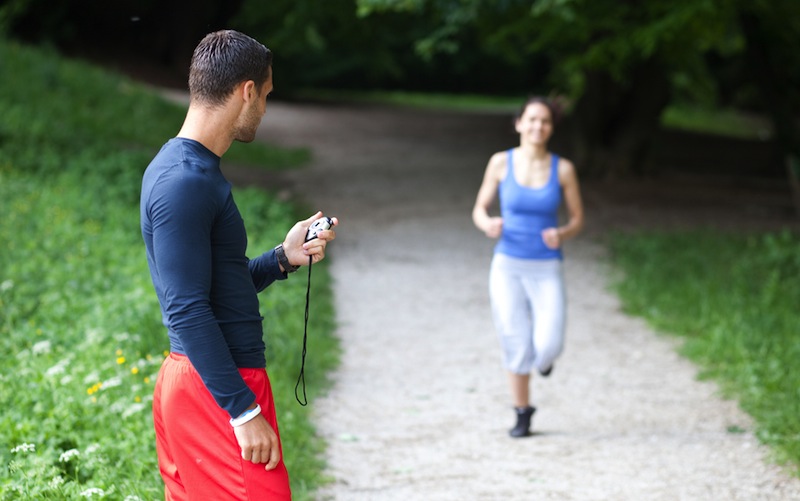
Can Exercise "Snacks" Stabilize Blood Sugar? (Op-Ed)

Dr. Etie Moghissi is a clinical endocrinologist involved in patient care in private practice in Marina del Rey, Calif., as well as an associate clinical professor of medicine at the University of California, Los Angeles. She is board certified in internal medicine and endocrinology, a member of the board of trustees of the American College of Endocrinology, former vice president of the American Association of Clinical Endocrinologists and was nstrumental in the creation of Diabetes Education Day for Primary Care, a program sponsored by AACE to improve care for those with diabetes. Dr. Moghissi contributed this article to Live Science's Expert Voices: Op-Ed & Insights.
Could snacking before meals be the key to controlling blood sugar levels? Yes, if the snacking comes in the form of "exercise snacks" — short, intense bursts of activity — according to thought-provoking new research that may add a new twist to the advice doctors offer people suffering from diabetes or insulin resistance.
While prior evidence has shown that exercise snacks can improve mood, blood pressure and weight management, a study published on May 8 in the journal Diabetologia is the first to compare high-energy and more moderate exercise in relation to blood sugar levels and exercise before meals. The results beg for confirmation from further studies, but may prove tempting for people who can't — or don't want to — spend 30 minutes on a treadmill.
The well-planned study, conducted by scientists in New Zealand, included nine adults ranging from 18 to 55 years old. Participants' blood tests showed that all had insulin resistance, a condition where the body makes insulin but doesn't use it effectively. Insulin resistance can be a precursor to type 2 diabetes , and two of the nine were actually diagnosed with this condition — one that affects about 24 million Americans — during the study's initial screening.
Using a crossover design for the experiment, each participant acted as his or her own control: They all completed three separate exercise regimens, each over three days. The moderate exercise regimen included a 30-minute session before dinner, while the two exercise-snacking regimens consisted of six one-minute bursts of intense activity alternating with one minute of slow walking between bursts. The exercise snacks , completed 30 minutes before breakfast, lunch and dinner, included either brisk incline walking or rotating between walking and resistance training.
The verdict was provocative: 30 minutes of moderate exercise — which conforms to traditional exercise recommendations — didn't control blood sugar as effectively as both exercise-snacking routines. Compellingly, the drop in participants' blood sugar levels persisted for a full day following exercise snacks.
The authors' findings would be more convincing if perhaps 100 people were included in the research instead of only nine. And it's impossible to say if the same blood sugar effects would be achievable if exercise snacks were done after eating, or several hours beforehand. But while these gaps in knowledge are unavoidable without further research, a notable strength of the study is its use of participants as their own control subjects. Running three separate experiments on the same patients at different times matched the groups — and added credibility to the findings — in a way not otherwise possible.
Sign up for the Live Science daily newsletter now
Get the world’s most fascinating discoveries delivered straight to your inbox.

As physician spokesperson for Blood Sugar Basics, a program to provide actionable information for people living with diabetes about blood sugar, I often refer to diabetes management as a four-legged stool. Proper care depends on lifestyle modifications, disease awareness, monitoring blood sugar levels, and when medication is necessary, working with your health care team to individualize your treatment.
With that in mind, here are some tips to help manage blood sugar levels:
- Keep your weight down by avoiding processed foods — which includes most found in boxes — and sticking with fresh ingredients. Cut back on refined grains such as pasta and white rice along with sugar-laden sodas and fruit juices.
- Balance meals with a mix of complex carbohydrates such as whole grains, low-fat proteins like fish and chicken, and fruits and vegetables.
- Take advantage of even small opportunities to move your body. Walk for 15 minutes during your lunch break, take stairs instead of elevators and park your car a little farther than necessary from your destination. Housework and gardening also count.
- Know your blood sugar levels. Annual checkups should include blood glucose tests, and those with pre-diabetes or diabetes should undergo the gold standard of glucose tests, known as the A1C. This measures a person's average blood sugar level over the prior two to three months and provides the best chance of avoiding serious diabetes complications in the heart, blood vessels, kidneys, feet and eyes.
- Work with your doctor to develop a personal treatment plan that is right for you. Keep in mind that diabetes is a progressive disease and sometimes changes in medication may be needed.
This new research shouldn't be the last word on what type of exercise works best at blood sugar control, but it may prompt clinicians to re-examine how we counsel our patients. Any exercise is better than none, and apparently even one-minute bursts can make a meaningful difference for some people. Snacking before meals has never before seemed like such a sensible idea.
Follow all of the Expert Voices issues and debates — and become part of the discussion — on Facebook, Twitter and Google +. The views expressed are those of the author and do not necessarily reflect the views of the publisher. This version of the article was originally published on Live Science.









